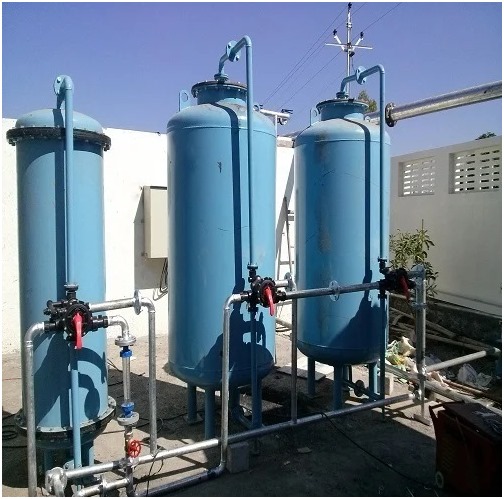Water Treatment and Wastewater Treatment Plants (WWTP)
The general name given to a plant typically used to treat water sourced from surface or groundwater for supply into the urban water system. This definition applies to: Glossary for Regulations: Water Regulations.

About Water Treatment and Wastewater Treatment Plants (WWTP)
Introduction
Water is essential for all forms of life, and its availability in a clean and safe form is a fundamental requirement for human civilization. To ensure the provision of safe drinking water and protect the environment from pollution, Water Treatment Plants (WTP) and Wastewater Treatment Plants (WWTP) play pivotal roles. This essay explores the significance of these facilities, their operations, and their critical contributions to environmental sustainability.
Water Treatment Plants (WTP)
Water Treatment Plants are vital components of urban and rural infrastructure worldwide. They are designed to purify raw water from various sources such as rivers, lakes, or underground aquifers, making it safe for human consumption and industrial use. The primary goals of WTPs are:
Removal of Impurities: WTPs remove physical, chemical, and biological impurities from raw water. Processes like coagulation, sedimentation, filtration, and disinfection are employed to eliminate suspended solids, bacteria, viruses, and harmful chemicals.
Disinfection: Chlorination or other disinfection methods are used to kill any remaining microorganisms that may pose health risks.
Fluoridation and Other Enhancements: In some cases, WTPs add fluoride and other chemicals to improve water quality and protect dental health.
Distribution: Treated water is then distributed through a network of pipes to homes, businesses, and industries.
The impact of WTPs is immense, ensuring access to clean drinking water and reducing waterborne diseases. Additionally, they support industrial processes, agriculture, and fire-fighting activities. Furthermore, through advanced treatment processes, WTPs can remove emerging contaminants like pharmaceuticals and personal care products, contributing to long-term environmental health.
Wastewater Treatment Plants (WWTP)
Wastewater Treatment Plants are essential for managing and treating the water that has been used for various domestic, industrial, and commercial purposes. These plants are instrumental in:
Collection and Conveyance: WWTPs receive wastewater from sewage systems, industrial discharges, and stormwater runoff. The initial step involves screening out large objects and removing grit to protect downstream equipment.
Primary Treatment: In primary treatment, solids are settled out of the wastewater through sedimentation, reducing the suspended solids content.
Secondary Treatment: Biological processes are employed in secondary treatment to break down organic matter in the wastewater. Aerobic and anaerobic processes use microorganisms to convert pollutants into less harmful forms.
Tertiary Treatment: Depending on the specific requirements, tertiary treatment further refines the treated water, often through advanced filtration or chemical processes.
Discharge or Reuse: Treated wastewater is either safely discharged into natural water bodies or, in some cases, reused for non-potable purposes like irrigation or industrial cooling.
Importance of WWTPs extends beyond just ensuring a clean environment. They safeguard aquatic ecosystems, prevent pollution of surface waters, and minimize the potential harm to human health caused by exposure to untreated wastewater. Moreover, they facilitate the recycling of water, addressing water scarcity issues in many regions.
Environmental and Sustainability Benefits
Preservation of Ecosystems:WTPs and WWTPs help maintain the balance of aquatic ecosystems by ensuring that discharged water meets regulatory standards. This protects aquatic life and the quality of natural water bodies.
Public Health: Access to clean drinking water and proper wastewater treatment significantly reduce waterborne diseases, enhancing public health and well-being.
Resource Conservation: WWTPs facilitate the recovery of valuable resources like energy, nutrients (such as phosphorus and nitrogen), and water, contributing to sustainable resource management.
Climate Mitigation: By reducing pollution and conserving resources, these facilities indirectly contribute to climate change mitigation efforts.
Challenges and Future Considerations
Despite their numerous advantages, WTPs and WWTPs face challenges such as aging infrastructure, population growth, and emerging contaminants. To address these challenges, there is a need for continuous investment in technology, infrastructure, and public awareness. Future developments should also focus on more sustainable and energy-efficient treatment methods.
Conclusion
Water Treatment Plants and Wastewater Treatment Plants are critical components of our infrastructure, ensuring the availability of clean water for consumption and protecting the environment from pollution. These facilities not only improve public health and safety but also play a significant role in environmental sustainability. Continued investment and innovation in water and wastewater treatment are essential to meet the growing demands of our society while safeguarding our natural resources and ecosystems for future generations.
© 2023 Bio Earth Engineering. All rights reserved.
